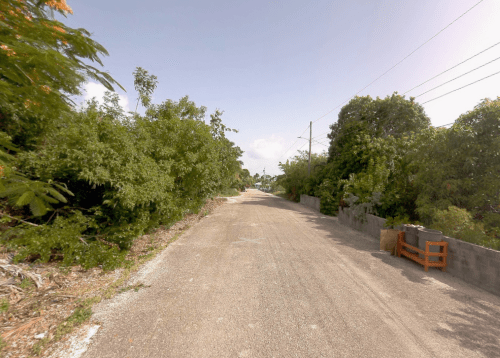(CNS): The Ombudsman has found the department of planning and the central planning authority are abusing their power by “slavishly applying” a section of the law, knowing it to be faulty and prejudicial. In relation to the outdated notice system that has long been known to be problematic, Sharon Roulstone said, the department, despite knowing the issues has done nothing about it. She also said planning is abusing the legal process by allowing multiple applications for the same developments.
The Ombudsman’s findings reflect some of the biggest concerns in the community about the arbitrary unfair and opaque process followed by one of the country’s most impactful departments and how it lets people know what developments are being considered in their communities.
Following a complaint by home owners in Lower Valley, who were attempting to object to the construction of an apartment block in their community made up of family homes, Roulstone said that alongside the abuse of power and process, there was maladministration on the part of public servants. This related to a number of areas about how home owners are notified of intended development, new applications or appeals in their neighbourhoods.
“It is improper administration and potentially an abuse of power to slavishly apply a section of the law, knowing it to be faulty and prejudicial, yet take no meaningful steps to address it,” Roulstone said in a letter to the couple who had filed the complainant.
“I support your complaint,” the ombudsman told the complainants and said that recommendations had been made to the CPA and department that some reform of the current Planning system is required to comply with their obligations under section 19(1) of the Cayman Islands Constitution that deals with lawful administrative action and requires all decisions and acts of public officials to be lawful, rational, proportionate and procedurally fair.
She stated that they, along with other affected individuals in the area, held a reasonable and legitimate expectation that the CPA’s initial decision from May 2024 would be subject to the appeals process. But they did not receive notification of the second application on on block 37A parcel 47 pertaining to the same project by the developer Howard Frazer, which according to the planning agenda received no objections when the department was well aware of several.
“The absence of an existing objection during the second hearing before the CPA effectively nullified your right to appeal to the PAT,” Roulstone wrote. “As a result, you and other objectors from the original application were deprived of the opportunity to submit representations in an appeal hearing submission -had such a process been available – and were further precluded from challenging the CPA’s decision regarding the second application.”
The couple had reported these concerns to the ombudsman’s office, which investigates complaints about how public officials treat the public, when the planning department failed to notify them of firstly the original and then a re-application for a development as well as the appeal that was in the end never heard.
Despite not getting the official letter the objectors had managed to object in time to the original application as they heard through other unofficial sources about the proposed plan. They filed their objections to the proposal which were heard during the first CPA meeting and the development was refused. But the ongoing saga didn’t stop there. While the project was supposed to be the subject of an appeal the developer re-submitted an application and despite the planning department being well-aware of the objections they failed to properly notify the objectors again.
“Taken as a whole this is improper administration and abuse of process and therefore, maladministration,” Roulston said in her summary of the planning department’s actions. “Simply because there is no legal prohibition against multiple planning applications for the same development does not relieve the CPA, or its administrator, the DoP, of the duty to mitigate against unfairness and inconsistency, as well as promote transparency, by creating policy -and publishing it – on this practice.”
There have long been public concerns about planning’s lack of transparency in many areas and what seems to be the lengths the department goes to keep planning applications under the radar. The department still uses registered mail and sends just one letter to individual land-owners’ box numbers that are listed with the land registry. In many cases people no longer have the same PO number and are unaware that they are responsible for changing it and need to pay $50 to do so.
As a result many owners who should be notified by law of planning application are not as the letters are undelivered to the intended recipient. But this is something that planning considers not to be its problem. Despite hearing complaints on many occasion from neighbours objecting to proposed projects who had been oblivious of the development plans in their area until the last minute or even after the fact the department has taken no action to addresss this well-known problem.
In general the public appears unaware that this is the only method planning uses relating to notifications even though it could use social media, emails, text messages, or physical notices posted at the proposed planning sites –common in many other jurisdictions. Even planning notices posted on the website are difficult to decipher with very little information made public at that stage, and there is no way to sign up for an online notification alert whenever an application is posted.
The notification radius is already very limited. This prevents many people who are impacted by developments to object even those affected by flooding caused by the accumulation of development in areas that the CPA has also repeatedly said is not its concern.
The findings by the ombudsman have been welcomed by the couple. But when one of them spoke to CNS she confirmed that the development is underway now because even though planning was well-aware of their objection and had all of their correct contact details they simply failed to contact them regarding the re-application, which they noted, barely differs if at all from the original submission.
Dumfounded by how a developer can have an application considered and rejected, appeal that rejection and then apply for the same project, have it re-heard and granted, the couple say their fight is not over.
Given the findings of the Ombudsman’s office they believe that there must be some form of redress for them and the other people in their neighbourhood who also object to the project that is now underway. The system they told CNS has to be changed as it is clear the whole planning process is going awry and failing to serve the people of the Cayman Islands.
See the findings of the Ombudsman below in relation to the complaint. CNS has blocked out the personal details of the complainants.

















